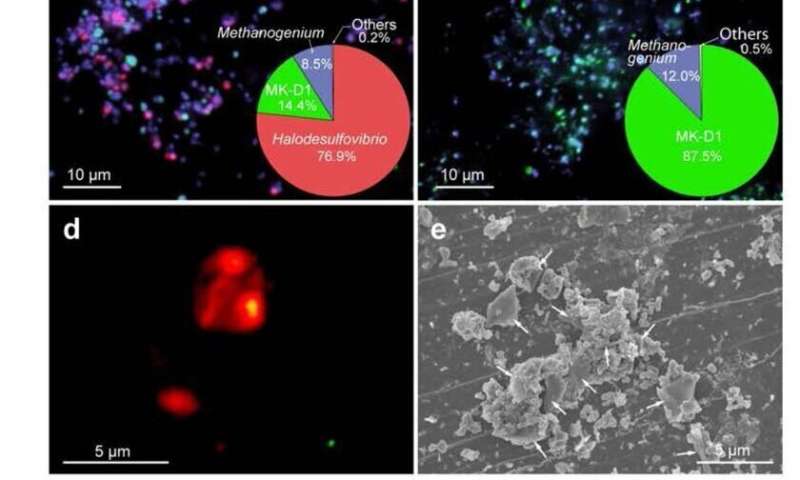August 12, 2019 report
Researchers grow Lokiarchaea in special tank over 12-year study

A team of researchers affiliated with several institutions in Japan has succeeded in cultivating samples of Lokiarchaea in a special tank in their lab. They have published a paper describing their work on the bioRxiv preprint server as they await publication.
The tree that represents all known living things has three main branches: eukaryotes, bacteria and archaea. The first branch includes existing organisms, including humans; the second comprises familiar microbes—but archaea are less well-known. They, too, are microbes, and resemble bacteria, but are actually different. In recent years, some scientists have suggested that eukaryotes evolved through interactions between archaea and bacteria. Some have taken a further step and suggested that a certain kind of archaea, Asgard archaea, may have been that which interacted with bacteria, resulting in the first eukaryotes. Such theories emerged after researchers subjected samples of mud from the deep ocean to DNA analysis—the results showed evidence of both archaea and eukaryote-like genomes. The samples were given the name Lokiarchaea, because they were uncovered from an area close to Loki's Castle, a deep-sea hydrothermal vent. These theories were met with skepticism, however, due to the possibility of sediment contamination. In this new effort, the researchers have overcome that argument by growing and testing pure samples of Lokiarchaea in their lab.
The work consisted of obtaining sand from the seafloor and putting it in a special chamber that mimicked the conditions under which the mud was found—deep pressure and exposure to a lot of methane. The researchers report that it took five years for the microbes to reproduce in detectable numbers. Once that happened, they separated the microbes into glass tubes, and once again waited for signs of a colony to develop. That took another year. At that point, the team collected samples and carried out a DNA study that confirmed the microbes were Lokiarchaea. More time passed as the researchers allowed the colony to grow. Twelve years into the project, the team finally had a large enough sample for more sophisticated testing. DNA analysis showed that the Lokiarchaea genome did have eukaryote-like genes, strongly bolstering the theory that eukaryotes evolved due to interactions between archaea and bacteria.
More information: Hiroyuki Imachi et al. Isolation of an archaeon at the prokaryote-eukaryote interface, biorxiv (2019). DOI: 10.1101/726976
© 2019 Science X Network





















